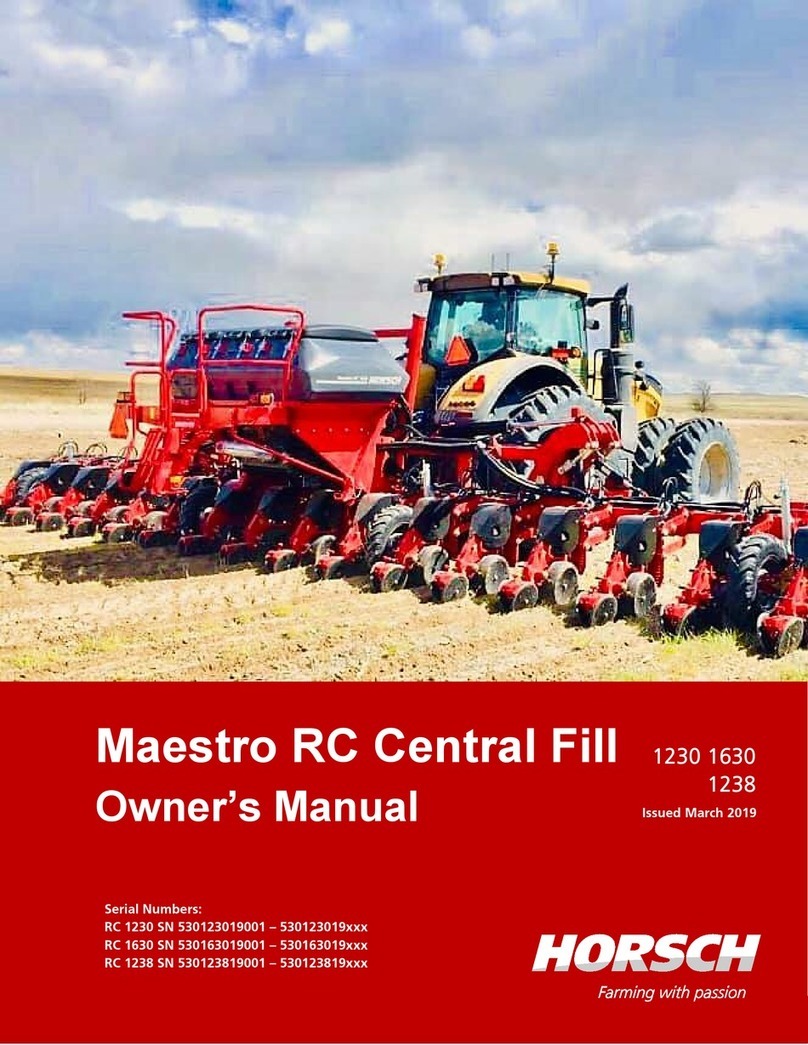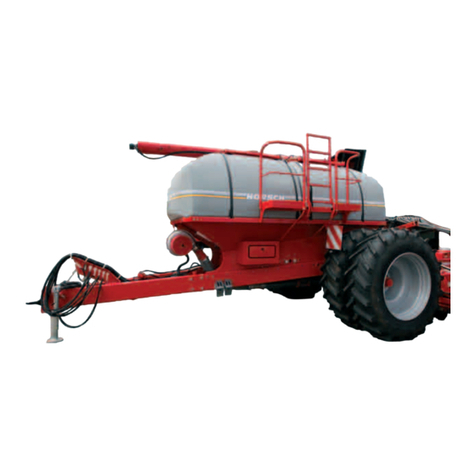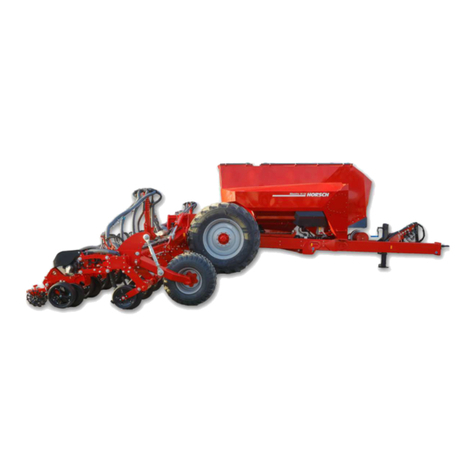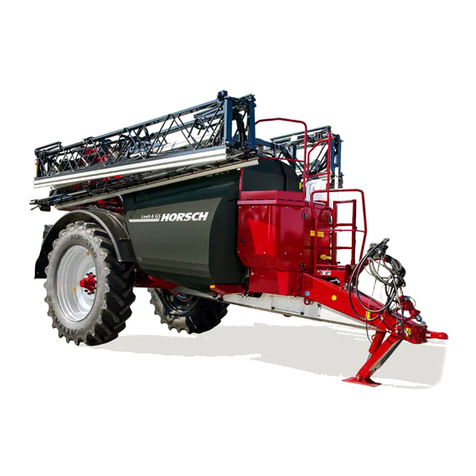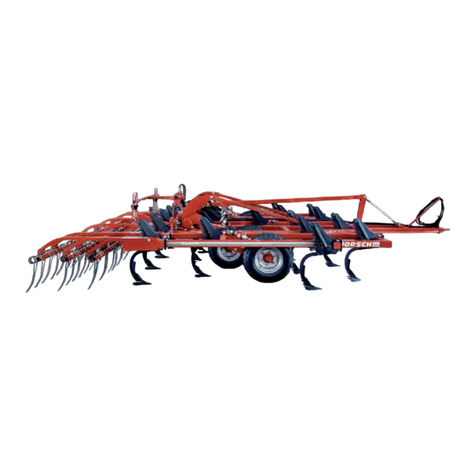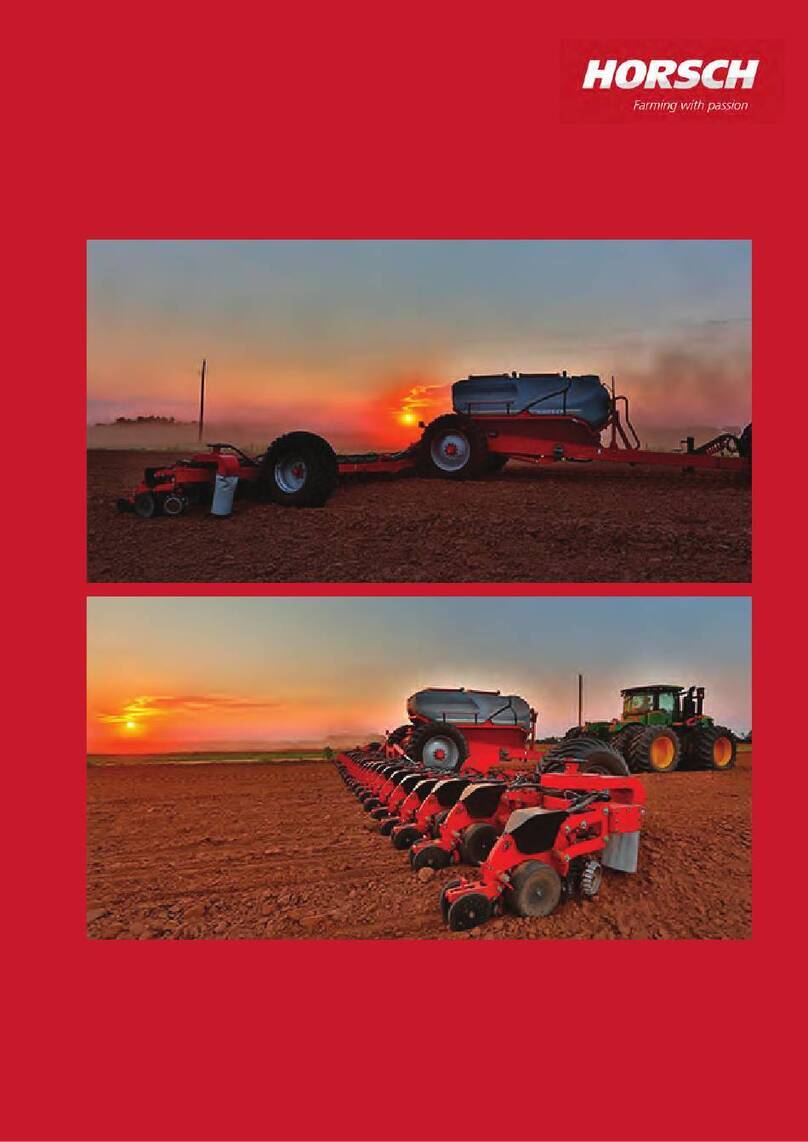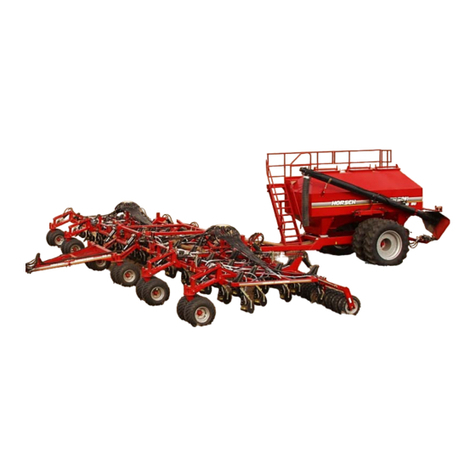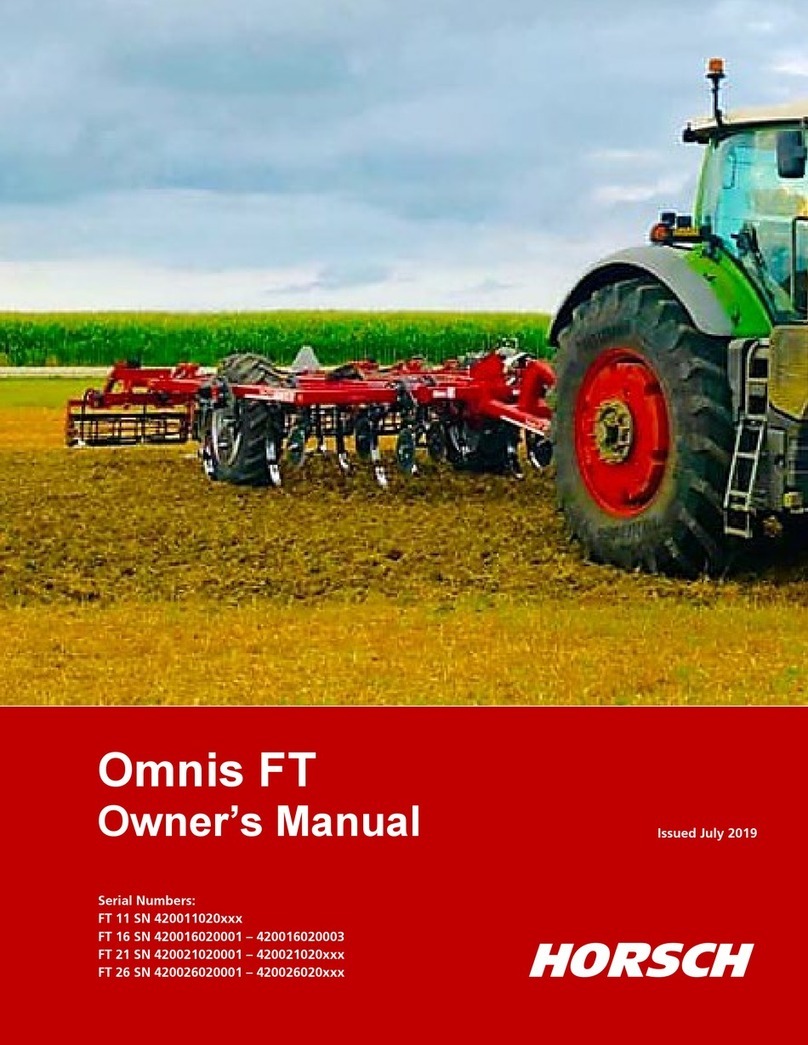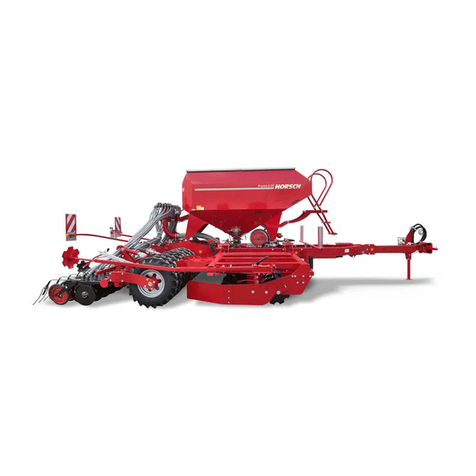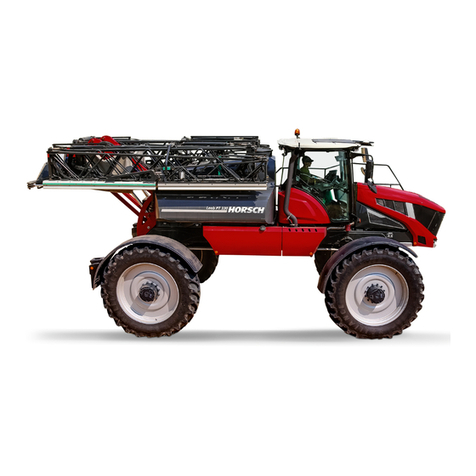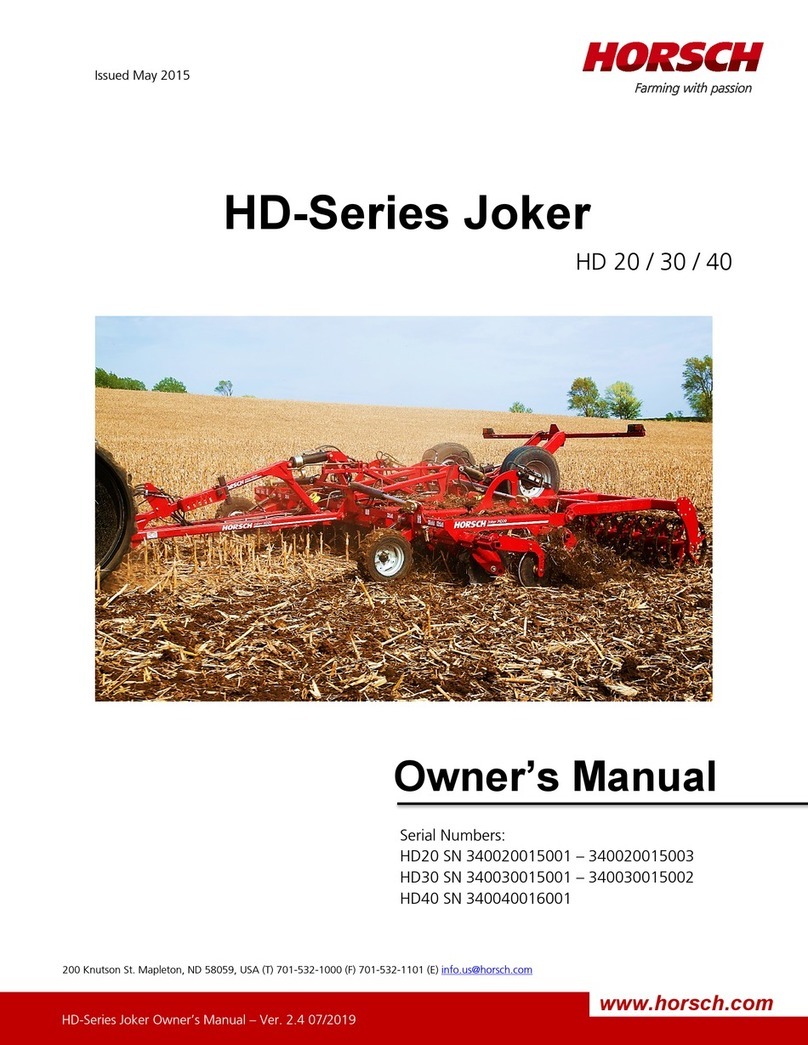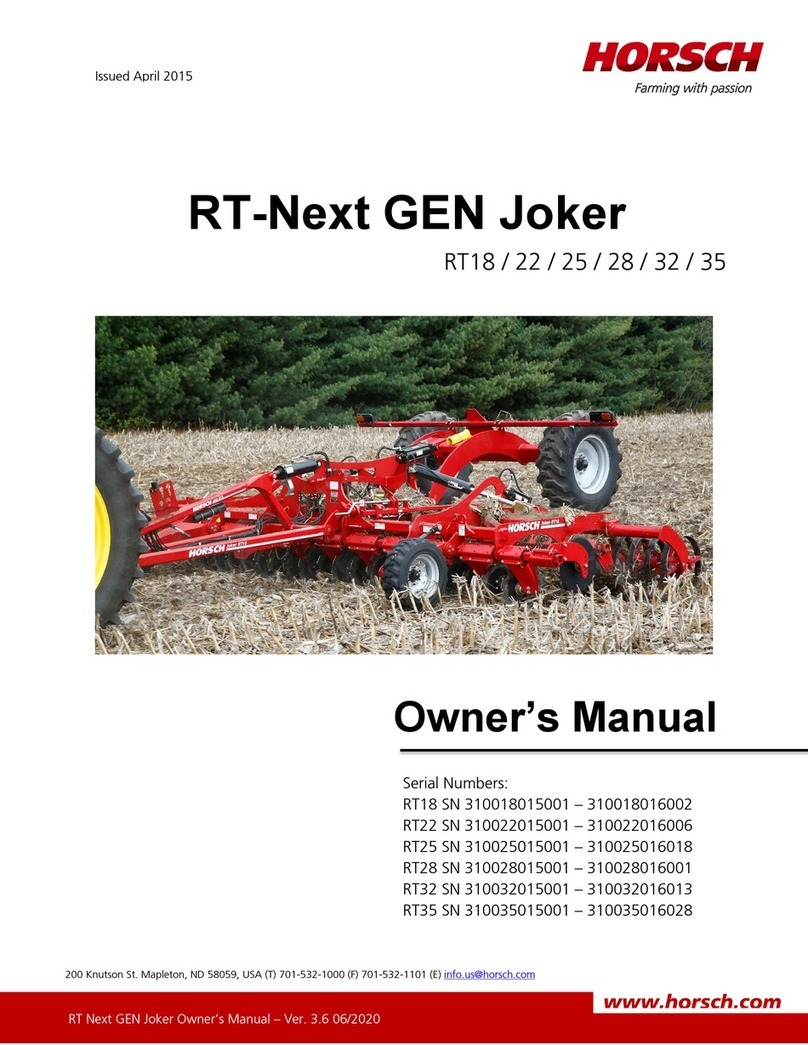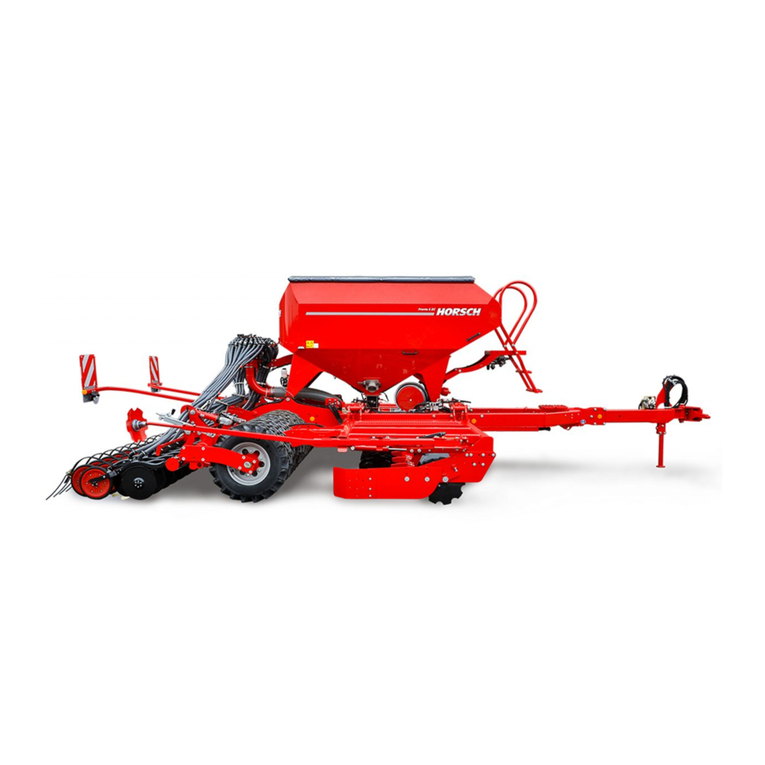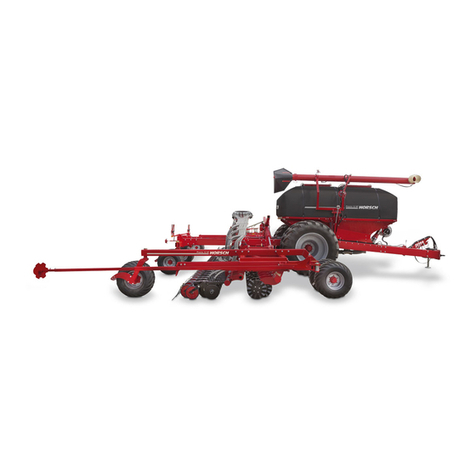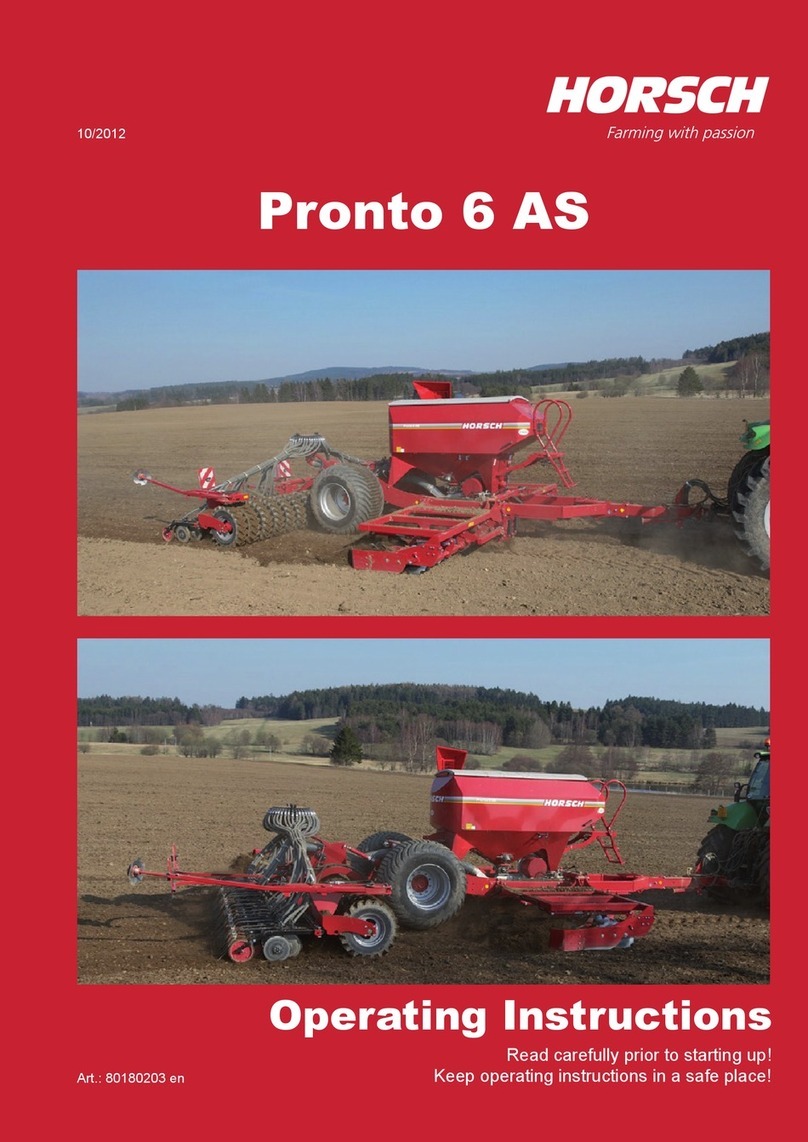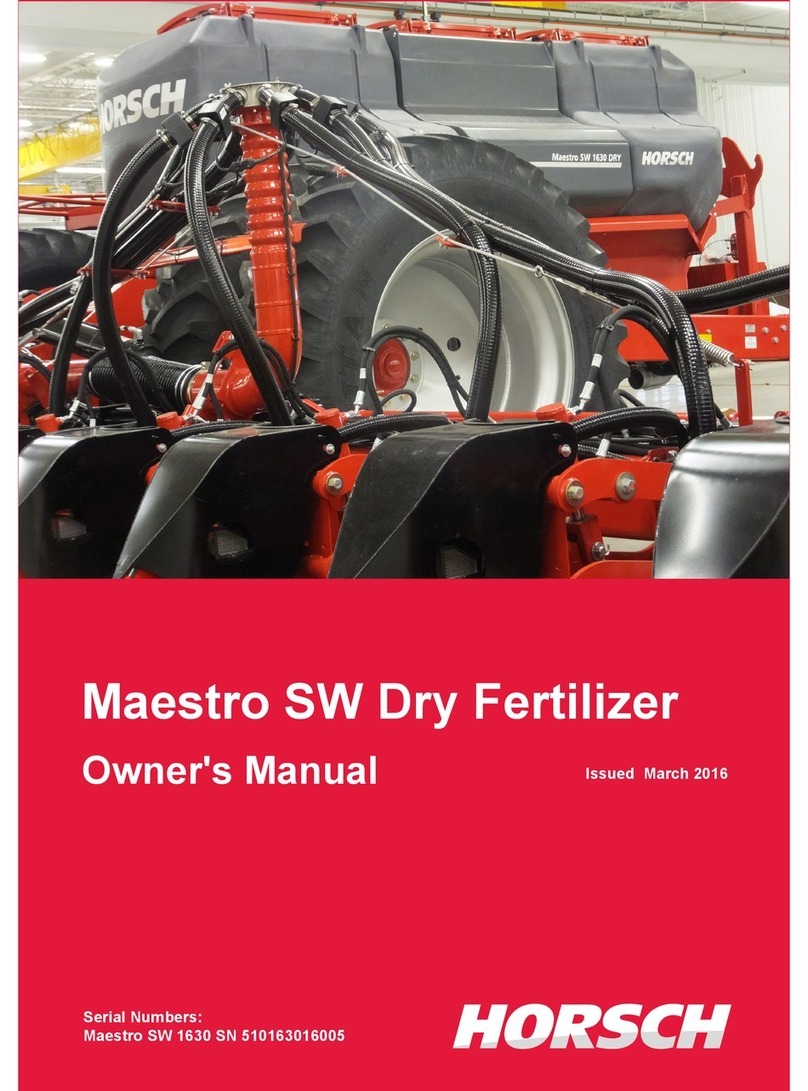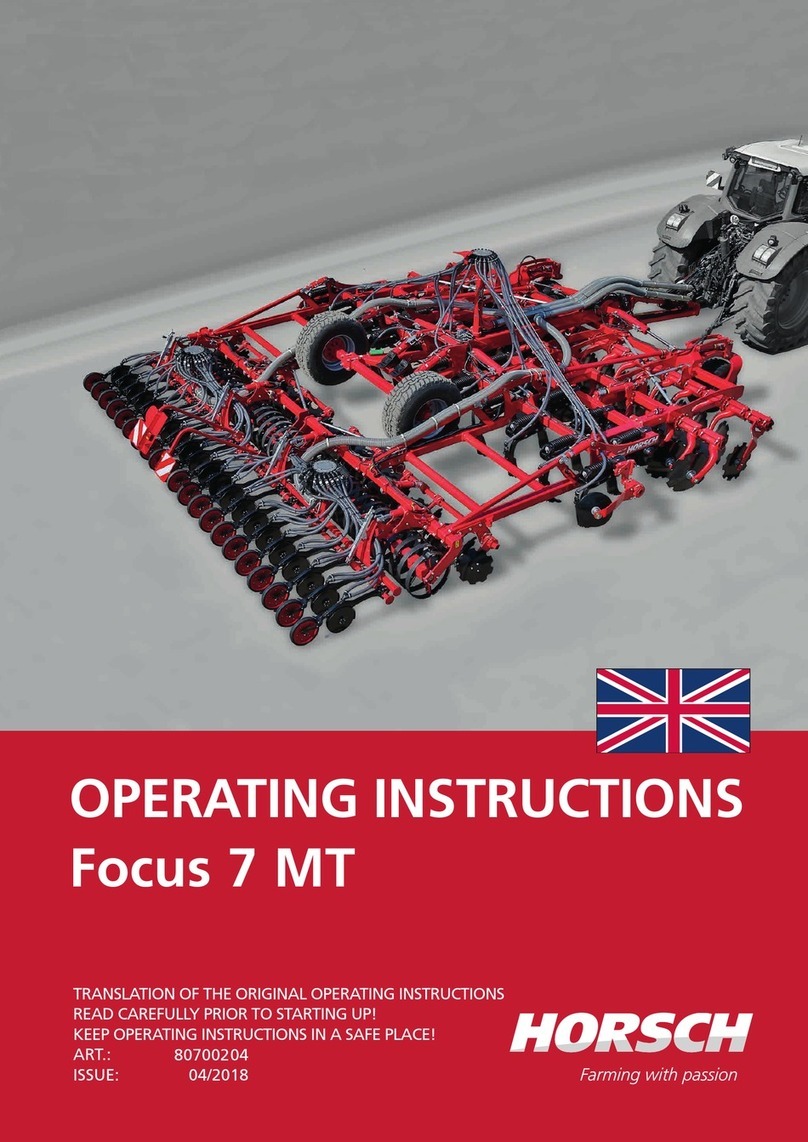
Table of contents
Introduction...................................................4
Foreword ........................................................4
Notes on representation .................................4
Service............................................................5
Warranty claim processing .............................5
Consequential damage...................................5
Safety and responsibility.............................6
Intended use...................................................6
Qualication of personnel...............................7
Children in danger ..........................................8
Personal protective outt................................8
Safety in trac................................................8
Safety in operation..........................................9
Fertiliser and dressed seed ..........................12
Environmental protection..............................12
Retrotting and conversions.........................12
Care and maintenance .................................13
Danger zone.................................................14
Safety stickers ..............................................15
Commissioning...........................................18
Delivery.........................................................18
Transport ......................................................18
Installation ....................................................18
Construction ...............................................19
Overview Joker 5/6 RT.................................19
Construction ...............................................20
Overview Joker 8 RT....................................20
Hydraulics.....................................................21
Marking of hydraulic hoses...........................21
Aluminium clips.............................................30
Lighting.........................................................31
Instruction stickers........................................32
Technical data.............................................34
Type plate.....................................................34
Requirements for the tractor.........................38
Operation.....................................................40
Commissioning / Tractor change..................40
Adapting the hose connection ...................40
Connecting/Parking ......................................41
Connecting ...................................................41
Transport position.........................................43
Parking .........................................................45
Wings............................................................46
Depth setting Joker 5/6 RT...........................47
Manual depth setting .................................47
Hydraulic depth setting (option).................48
Depth setting Joker 8 RT..............................49
Manual depth setting .................................49
Hydraulic depth setting (option).................49
Use in the eld..............................................50
Checks..........................................................51
Optional equipment....................................53
Brake system................................................53
Pneumatic brake........................................53
Brake valve unit .........................................55
Hydraulic brake..........................................56
Parking brake.............................................57
Crossbar.......................................................58
Cutting blade roller .......................................58
MiniDrill.........................................................59
Protective devices ........................................60
Assembly groups .......................................61
Support wheels.............................................61
DiscSystem...................................................62
Side limitation ............................................62
Replacing discs..........................................62
Packer ..........................................................63
2

